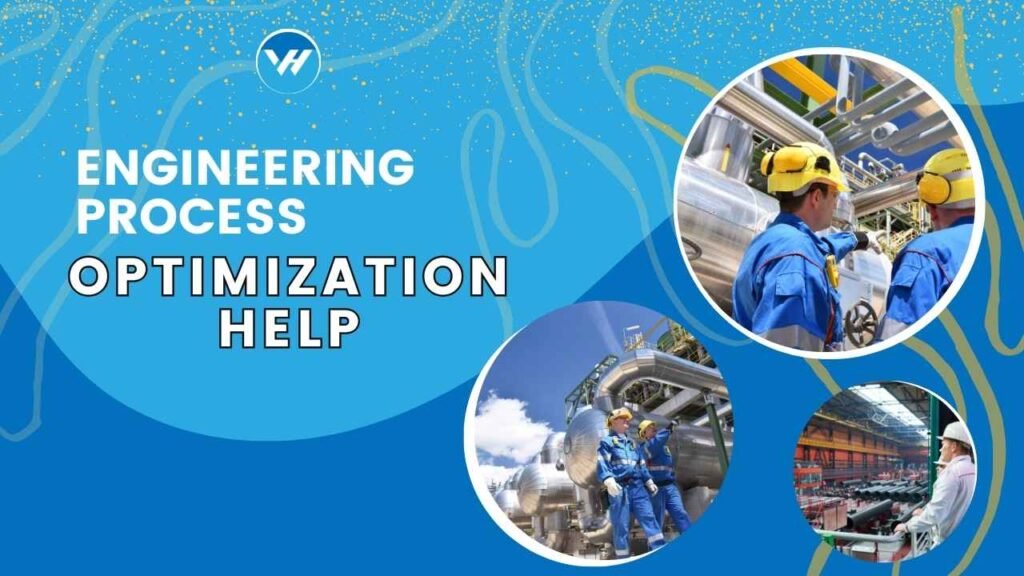Ever felt like your engineering projects could run a bit smoother? Or maybe you’re looking to cut costs without sacrificing quality? That’s where engineering process optimization comes in. It’s all about fine-tuning processes to make them as efficient and effective as possible. In this article, we’ll dive deep into what engineering process optimization is, why it’s important, and how you can get started. Plus, we’ll introduce you to a handy tool called Virtual Help that can make the journey a whole lot easier.

Table of Contents
ToggleUnderstanding the Basics
Definition of Process Optimization
So, what exactly is process optimization? In simple terms, it’s the practice of making a process as effective and efficient as possible. Think of it like tuning a car engine. You want to get the maximum performance with the least fuel consumption.
Key Concepts in Process Optimization
There are a few key concepts you’ll hear a lot in process optimization:
- Efficiency: Doing things right with minimal waste.
- Effectiveness: Doing the right things to achieve the desired outcome.
- Continuous Improvement: Always looking for ways to improve.
The Benefits of Engineering Process Optimization
Increased Efficiency
One of the biggest perks of process optimization is increased efficiency. By streamlining processes, you can get more done in less time. Imagine being able to complete a project in half the time it normally takes. Sounds good, right?
Cost Reduction
With increased efficiency often comes reduced costs. By cutting out waste and optimizing resources, you can save a ton of money. And who doesn’t like saving money?
Improved Quality
Optimization isn’t just about doing things faster and cheaper; it’s also about doing them better. By refining your processes, you can improve the quality of your output, whether that’s a product, service, or project.
Enhanced Competitiveness
In today’s fast-paced world, staying competitive is crucial. Process optimization can give you that edge, making your operations leaner, more responsive, and more innovative.
Steps in Engineering Process Optimization
Identifying the Process
First things first, you need to identify which process needs optimizing. It could be a manufacturing process, a service delivery process, or even a project management process.
Analyzing the Process
Once you’ve identified the process, the next step is to analyze it. This involves breaking it down into its individual steps and looking for bottlenecks, inefficiencies, and areas for improvement.
Designing Optimization Strategies
Now comes the fun part: designing optimization strategies. This could involve anything from automating certain tasks to reorganizing the workflow.
Implementing Optimization Solutions
With your strategies in hand, it’s time to put them into action. This might involve training staff, investing in new technology, or reengineering the process.
Monitoring and Adjusting
Process optimization isn’t a one-and-done deal. It’s an ongoing process. Once you’ve implemented your solutions, you need to monitor their effectiveness and make adjustments as needed.
Tools and Techniques for Process Optimization
Lean Manufacturing
Lean manufacturing is all about minimizing waste and maximizing value. It’s a great tool for process optimization, especially in manufacturing settings.
Six Sigma
Six Sigma is another popular technique that focuses on reducing variability and improving quality. It uses a data-driven approach to identify and eliminate defects.
Process Simulation
Process simulation involves creating a digital model of your process and using it to test different optimization strategies. It’s like a virtual sandbox where you can try out new ideas without disrupting your actual operations.
Value Stream Mapping
Value stream mapping is a visual tool that helps you see where value is added (and where it’s not) in your process. It’s a great way to identify areas for improvement.
Root Cause Analysis
Sometimes, the key to optimization is figuring out the root cause of a problem. Root cause analysis helps you get to the bottom of issues so you can address them effectively.
Challenges in Engineering Process Optimization
Resistance to Change
One of the biggest challenges in process optimization is resistance to change. People are creatures of habit, and getting them to adopt new ways of working can be tough.
High Initial Costs
Another challenge is the high initial costs. Whether it’s investing in new technology or training staff, process optimization often requires a significant upfront investment.
Complexity of Processes
Some processes are just inherently complex, and untangling them can be a daunting task. It takes a lot of skill and patience to optimize a complex process.
Data Collection and Analysis
Process optimization relies heavily on data. Collecting and analyzing this data can be a challenge, especially if you don’t have the right tools and expertise.
Role of Technology in Process Optimization
Automation
Automation is a game-changer when it comes to process optimization. By automating repetitive tasks, you can free up your team to focus on more value-added activities.
Data Analytics
Data analytics is another powerful tool for process optimization. By analyzing data from your processes, you can identify trends, uncover bottlenecks, and make more informed decisions.
Artificial Intelligence
Artificial intelligence (AI) is taking process optimization to the next level. AI can analyze vast amounts of data, identify patterns, and even predict future outcomes, helping you optimize your processes more effectively.
Internet of Things (IoT)
The Internet of Things (IoT) is revolutionizing process optimization by providing real-time data from connected devices. This data can be used to monitor processes, predict maintenance needs, and optimize performance.
How Virtual Help Can Assist with Engineering Process Optimization
Overview of Virtual Help
Virtual Help is an online platform that connects students with tutors and assignment help. It’s available as an iOS and Android app, making it easy to access on the go.
Features of the Virtual Help App
The Virtual Help app offers a range of features, including a user-friendly interface, real-time chat with tutors, and a wide selection of subjects and topics.
Finding Tutors and Assignment Help
One of the standout features of Virtual Help is the ability to find expert tutors in engineering process optimization. Whether you need help with a specific project or want to learn more about optimization techniques, Virtual Help has you covered.
Success Stories from Virtual Help Users
Many users have found success with Virtual Help, from improving their grades to mastering complex topics. The platform’s flexibility and accessibility make it a valuable resource for anyone looking to optimize their engineering processes.
Future Trends in Engineering Process Optimization
Advanced Robotics
Advanced robotics is set to play a major role in the future of process optimization. With robots becoming more intelligent and versatile, they’ll be able to take on more complex tasks, further enhancing efficiency and quality.
Predictive Maintenance
Predictive maintenance uses data analytics and AI to predict when equipment will need maintenance. This can help prevent costly breakdowns and ensure that processes run smoothly.
Digital Twins
Digital twins are virtual replicas of physical assets or processes. They allow you to simulate different scenarios and test optimization strategies in a risk-free environment.
Sustainable Practices
Sustainability is becoming increasingly important in process optimization. By incorporating sustainable practices, companies can reduce their environmental impact while also improving efficiency and cutting costs.
Conclusion
In a world where efficiency and quality are paramount, engineering process optimization is a must. By understanding the basics, using the right tools and techniques, and embracing new technologies, you can optimize your processes and stay ahead of the competition. And with resources like Virtual Help, you have the support you need to succeed.
FAQs
What industries benefit the most from process optimization?
Industries like manufacturing, pharmaceuticals, and aerospace benefit significantly from process optimization due to their complex and high-stakes operations.
How long does it typically take to see results from process optimization?
The timeframe can vary, but many companies start seeing improvements within a few months of implementing optimization strategies.
What qualifications should I look for in a process optimization consultant?
Look for consultants with experience in your industry, a strong understanding of optimization techniques, and a proven track record of success.
How can small businesses benefit from process optimization?
Small businesses can benefit by reducing costs, improving efficiency, and staying competitive in their markets. Even small changes can make a big difference.
What are the most common mistakes in process optimization?
Common mistakes include not involving employees in the process, failing to collect and analyze data effectively, and not being flexible enough to adjust strategies as needed.





